WILLIAM COOPER 1934-2015
Bill Cooper was an Australian artist regarded by Sir David Attenborough as the country's "greatest living scientific painter of birds".
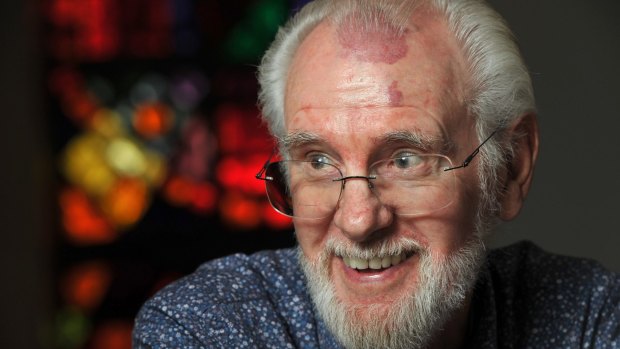
William Cooper (pictured in 2014) was awarded a gold medal for distinction in natural art from the Academy of Natural Sciences in Philadelphia.Credit: Graham Tidy
Cooper had an eye for botanical detail cultivated from his early career as a landscape painter, and his works surged with colour and activity. Whereas many of the great earlier artists had focused purely on their avian subject, his birds of paradise perched on leafed branches against a lush rainforest background.
In one work, a pair of wedge-tailed eagles do battle high above the plains of eastern Australia, while elsewhere two crimson rosellas peck at briar rosehips in the snow – "one of their favourite foods", as Cooper noted.
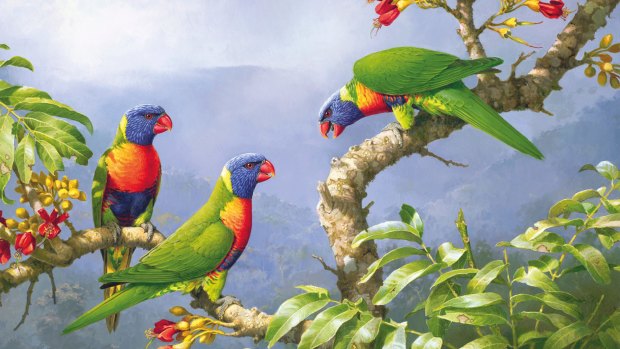
William Cooper's Rainbow Lorikeets.
He honed his knowledge of species in their natural habitats with extensive travel abroad, studying bird populations in far-flung regions across East Africa, Japan, Indonesia and Malaysia.
A regular companion on these journeys was Cooper's wife, Wendy, herself a respected – and, like her husband, entirely self-taught – botanist. Together they published three books on the fruiting plants of Australia's tropical rainforests, each one containing Bill Cooper's meticulous illustrations.
In 1979, his work caught the eye of Attenborough, who tracked Cooper down in Queensland and commissioned several paintings for his own private collection. The artist introduced the naturalist to the birds of paradise living on the Coopers' doorstep, and Attenborough made him the focus of a 1993 documentary, Portrait Painter to the Birds.
The following year, Cooper was appointed an Officer of the Order of Australia for his contribution to art and natural history.
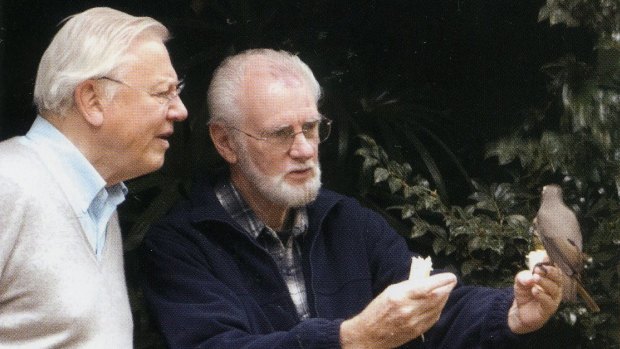
Sir David Attenborough commissioned several paintings for his private collection from William Cooper.Credit: Wendy Cooper
Born in Newcastle, NSW, on April 6, 1934, William Thomas Cooper grew up on the outskirts of a town still badly blighted by the Great Depression. The family lived in a makeshift shack with a dirt floor and walls made of hessian bags. In 1940, they moved to the New Lambton Estate, another shanty town, owned by a coal company and riddled with potholes from collapsed tunnels.
After their home came under shelling from a Japanese submarine, eight year-old Bill was sent to live for a time in Manilla, a small town north-west of Tamworth. There he came across the work of the 19th century artist John Gould, who was the first to produce truly accurate drawings of the birds of paradise; a group with which Cooper would later become obsessed.
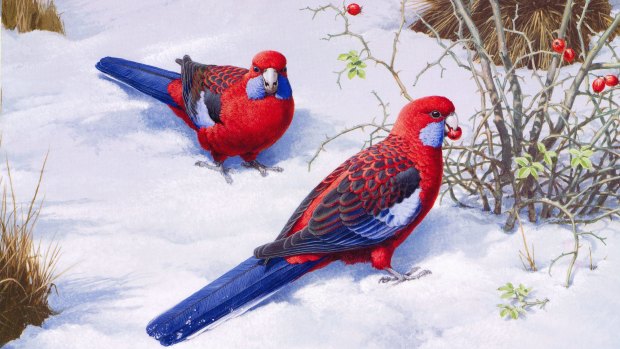
Cold Feet (Crimson Rosellas) 2012
Despite his talent for drawing, young Bill was not a natural student. He dropped out of school aged 15, tossed his exercise books off the edge of a cliff and got a job as an apprentice to a taxidermist at Newcastle's now-defunct Carey Bay Zoo. He acquired a reputation as the town's resident snake handler (he recalled an outing to the cinema being interrupted with a slide that read "Bill Cooper go home, the snakes have escaped").
There followed a period in which girls took precedence over reptiles, and he dabbled in window dressing and boxing while cohabiting with a woman 10 years his senior. After an ignominious period of National Service – during which he was court-martialled for walking out in a disagreement with officers – he returned to his boyhood love of art and made a start as a landscape painter.
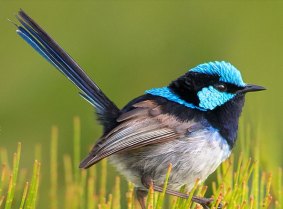
William Cooper had a remarkable knowledge of species in their natural habitats.
However, it was with the shift to birds in the 1960s that his work first came to public notice, thanks in large part to Cooper's painstaking methods. At his most prolific, he was at work for up to 14 hours a day. He would capture each bird with a dozen or so quick sketches to get a sense of how it moved, referring to a stuffed and mounted member of the species for the fine detail such as feathering and gradations of colour. Every feather in a wing would be counted.
His dedication to scientific exactitude earned him a gold medal for distinction in natural art from the Academy of Natural Sciences in Philadelphia. He is the only Australian to have received the honour.
Cooper's first book was Portfolio of Australian Birds (1967, with text by Keith Hindwood). Later, he collaborated with Joseph Forshaw, head of conservation for the Australian National Parks and Wildlife Service, on Parrots of the World (1978) and Pigeons and Doves in Australia (2015). Cooper also designed two sets of postage stamps for the government of Papua New Guinea.
In 2011, he published the guide Capturing the Essence: Techniques for Bird Artists. The skill he regarded as most essential was the careful study of the subject.
"Looking is one thing, seeing is another," he noted. "An artist needs to see, and the best way to learn is to draw."
Towards the end of Cooper's life he and Wendy lived in Topaz in the Atherton Tablelands in far north Queensland.
Though he no longer travelled much, there was not far to go for his subjects, with a studio flanked on all sides by tropical rainforest teeming with honeyeaters, parrots and brush-turkeys. Cooper spent many hours in conversation with these neighbours, supplying them with seed and fruit.
Wendy Cooper survives him.
Telegraph, London